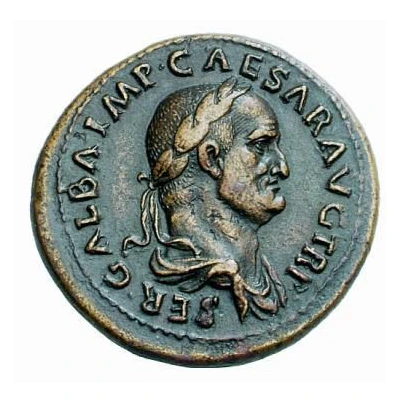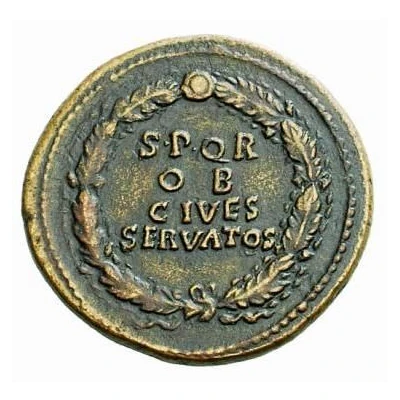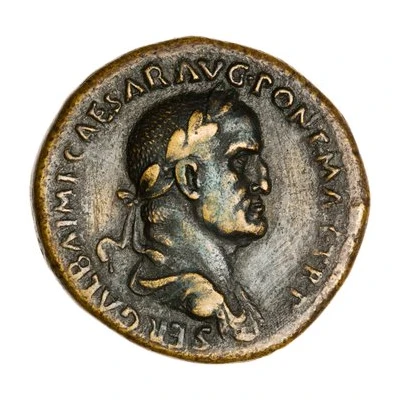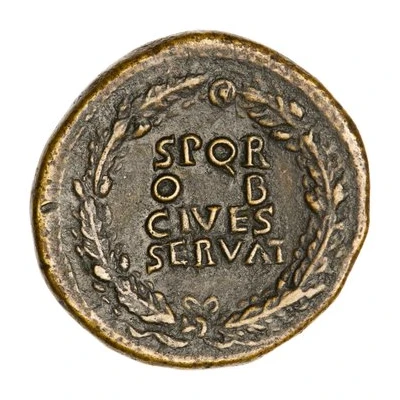


© Numismatica Ars Classica NAC AG
Dupondius - Galba S P Q R OB CIVES SERVATOS
| Bronze | 13.7 g | 30 mm |
| Issuer | Rome › Roman Empire (27 BC - 395 AD) |
|---|---|
| Emperor | Galba (Servius Sulpicius Galba) (68-69) |
| Type | Standard circulation coin |
| Years | 68-69 |
| Value | 1 Dupondius = ⅛ Denarii |
| Currency | Denarius, Reform of Augustus (27 BC – AD 215) |
| Composition | Bronze |
| Weight | 13.7 g |
| Diameter | 30 mm |
| Shape | Round (irregular) |
| Technique | Hammered |
| Demonetized | Yes |
| Updated | 2024-10-06 |
| Numista | N#245219 |
|---|---|
| Rarity index | 100% |
Reverse
Legend in four lines within oak-wreath
Script: Latin
Lettering: S P Q R OB CIVES SERVATOS
Translation:
Senatus Populusque Romanum Ob Cives Servatos
The senate and the Roman people to the saviour of the citizens.
Comment
Mass varies: 13.21–14.13 g;Source: Online Coins of the Roman Empire (OCRE)
Münzkabinett, Staatliche Museen zu Berlin (CC BY-NC-SA 4.0)
Interesting fact
The Dupondius - Galba coin was minted during the reign of Emperor Galba, who ruled the Roman Empire from 68 to 69 AD. The coin's obverse features the image of Galba, while the reverse shows the goddess Roma seated on a throne, surrounded by the legend "S P Q R OB CIVES SERVATOS," which translates to "The Senate and People of Rome, preserved." This coin was made of bronze and weighs 13.7 grams. Interestingly, the Dupondius - Galba coin was minted during a time of economic and political turmoil in the Roman Empire. The empire was facing financial difficulties, and the value of its currency was declining. As a result, the Dupondius - Galba coin was introduced as a new denomination to address these issues. Despite its introduction, the coin's value fluctuated, and it was eventually replaced by other coins. Overall, the Dupondius - Galba coin is a fascinating piece of history that provides insight into the economic and political climate of the Roman Empire during the 1st century AD.

